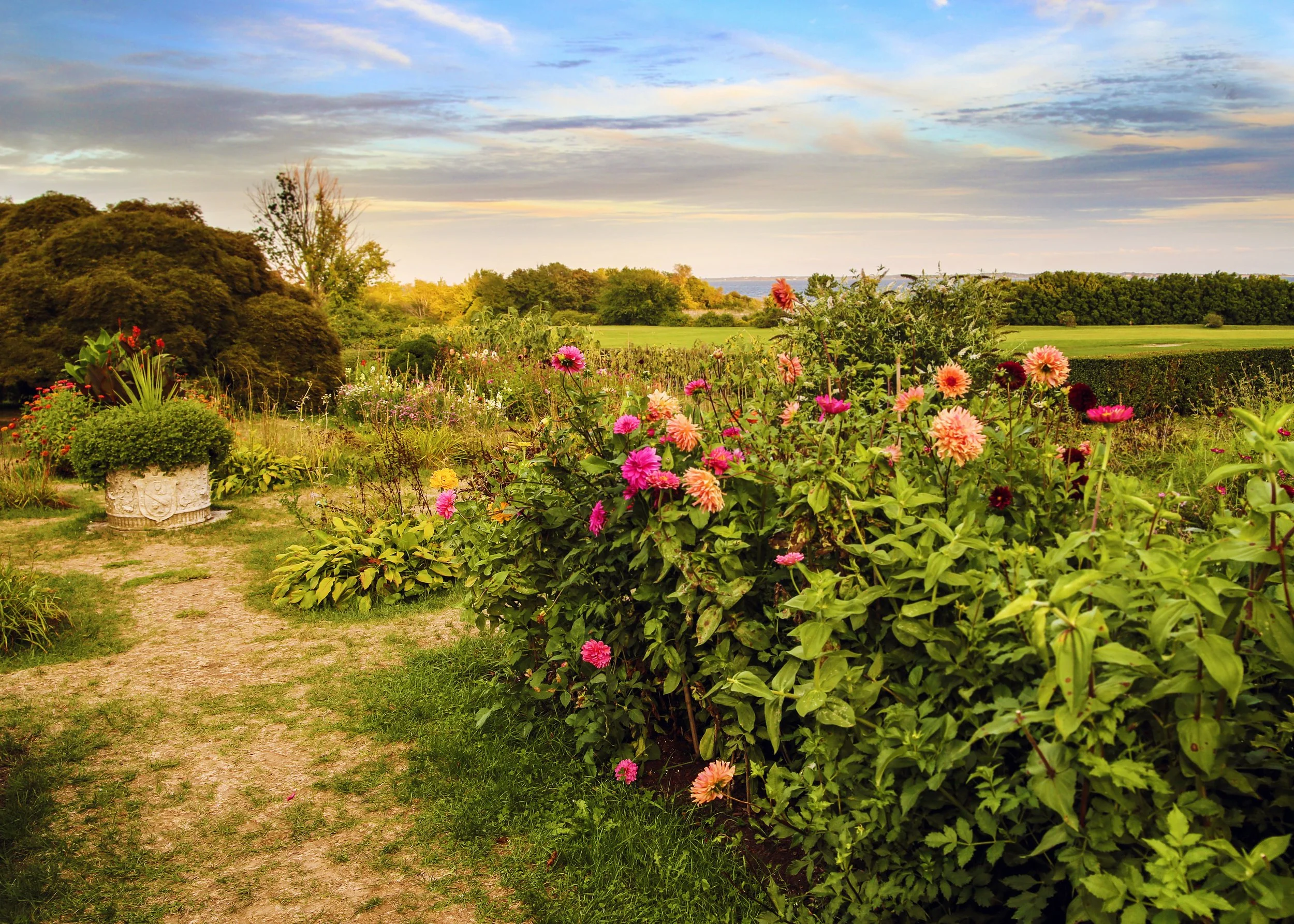Autumn planting tips, native seeding, and garden to-dos
By Kerry Lewis
Here in New England, fall is a great time for planting. The cooler temperatures and dependable rainfall are ideal for root growth. Plants start to go dormant in the fall and put most of their energy into growing roots, giving the plant a head start establishing itself for the following year. Deciduous shrubs, perennials and grasses are great for planting this time of year. It’s also the ideal season to seed a lawn area as you are not competing with annual weed seeds that germinate in spring. Finally, you can score some good bargains at the garden center!
Fall and early winter are also ideal times to sow native seeds. This method allows the seeds to experience a period of cold temperatures, which aids in breaking dormancy and promoting germination when warmer spring temperatures arrive. Wild Seed Project and Ecological Landscape Alliance both offer online resources that can help to guide you through the process of outdoor seed propagation through the winter.
Of course, fall isn’t the ideal time to plant quite everything. Six to eight weeks is not enough time in the ground for broadleaf evergreens (e.g., rhododendron, boxwood, holly) to develop a root system that can carry
them through the challenges of winter. They don’t go fully dormant like deciduous plants, and their foliage desiccates—or loses water—due to sun and wind stresses during the winter. I also prefer for needled evergreens to be in the ground by the end of September because, like broadleaf evergreens, they don’t go dormant in the winter and need more time to settle in.
One other caveat: Trees labeled as “Fall Dig Hazards” (see below) do not like to be dug in the fall for transplanting. Unless the tree you found was dug in the spring and well cared for in the nursery over the summer, you are better off waiting until spring for any species on this list.
Other fall-friendly garden tasks include weeding, planting bulbs, freshening mulch and properly disposing of diseased or pest-ridden plants. It’s a good time to look at your garden with an objective eye and determine what is working and what isn’t. I like to think of my fall garden cleanup with a “less is more” approach and save heavy lifting like pruning and cutbacks for spring. Most perennials are fine to leave intact through the winter, and they provide shelter and food for beneficial bugs and birds. Grasses and seed pods can also provide much-needed winter interest. Coneflowers, sedums, black-eyed Susans, Joe-Pye weed and blue star (Amsonia) are some of my favorite plants to enjoy for their winter interest and food/shelter value.
Exceptions include plants like hosta, peonies, bearded iris and lily that are best cut down in the fall to avoid harboring pests and disease (slugs, fungal disease and borer’s eggs, respectively). You may also want to cut down plants like phlox and beebalm that have succumbed to powdery mildew.
Happy planting, and take advantage of the season!
Fall dig hazards
Betula - Birch
Carpinus - Hornbeam
Crataegus - Hawthorn
Fagus - Beech
Nyssa - Tupelo or Black Gum
Quercus - Oak (except Q. palustris Pin Oak)
Ulmus - Elm
Zelkova
This article appeared in the Fall 2025 edition of Green & Healthy Maine HOMES. Subscribe today!
Find Maine experts that specialize in healthy, efficient homes in the Green Homes Business Directory.


